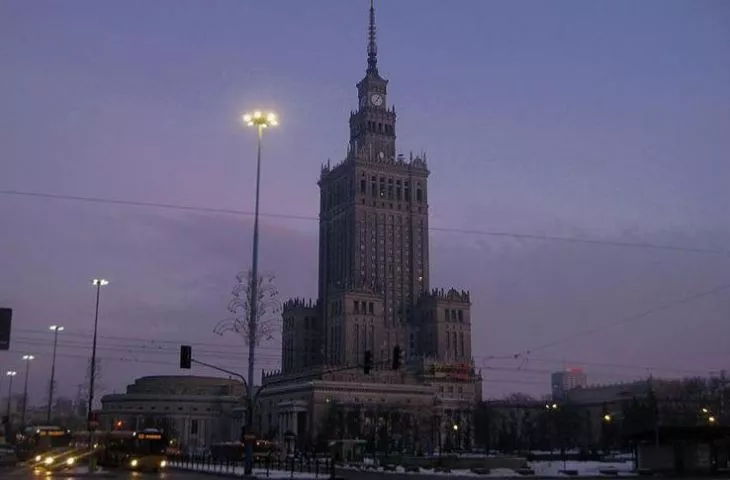The category of negative heritage is a well-known category in Poland, even if we do not use the phrase. It is intuitive. We often take a negative approach to the heritage of the People's Republic of Poland, eager to get rid of inconvenient monuments, in order to put in their place those that we consider appropriate from a contemporary perspective, often just as ideological as the old one.
The category of negative heritage(negative heritage) is a proposal of the American anthropologist and archaeologist Lynn Meskell and, in simple terms, refers to cultural creations that for some reason are not accepted, glaring, arouse controversy, in other words, evoke negative emotions in the audience. In the area of architecture in the historical perspective, the negative heritage is not small in number, and it is associated both with the times of partition, and the two world wars and the aforementioned period of the People's Republic of Poland. A little closer to our times, negative heritage can also be found in the 90s, the fledgling capitalism and architectural monstrosities that sometimes arouse nostalgia, sometimes a smile, other times pity (about which we can read, for example, in the collection of essays Polish Las Vegas and Brother-in-law with Corel. Architecture, fashion and design in the face of systemic transformation in Poland , edited by Lidia Klein).
monuments to the pope of Poland
The present in this context is hard to grasp. We will only be able to look at this problem in time, but we already know that a lot of emotion and dispute is aroused by contemporary monuments, especially the monuments to John Paul II, which are springing up like mushrooms after the rain. And especially in the context of such social interventions as the quite recent hanging of rainbow flags on the monuments, which was met with action from the uniformed services or notifications to the prosecutor's office in connection with the offense of, so-called, religious feelings. This is an excellent example of how monuments come to life and begin to "speak," thus taking part in the social spectacle of the desires and needs of various groups. Surely this vision would have delighted Stanislaw Wyspianski, who, after all, in his famous 1904 drama Akropolis , brought to life the monuments located in Wawel Castle. Nowadays, as it turns out, one does not need the intervention of a national bard to do so.
Send back to the Kremlin?
But back to the People's Republic of Poland - the Palace of Culture and Science in Warsaw, which arouses unflagging emotions and was originally named after Joseph Stalin and was "a gift of the Soviet people to the Polish people," is considered by some to be a pearl of architecture, while for others it is a gigantic trauma growing in the center of the capital. On the 65th anniversary of the Palace's completion, the dispute over whether to demolish or leave the building, which, by the way, is still trying to be tamed, as it were, if only by its colorful illumination (it sometimes sparkles with a rainbow array of colors, which, in the context of the controversy of rainbow flags on monuments, has positioned the Palace in the opinion of some of the more conservative as a guardian not only of communism, but of "LGBT ideology"). Birthday wishes for the Palace made on Twitter by a spokeswoman for Warsaw's City Hall sparked considerable controversy and a mass of responses, such as: "I wish an imminent demolition. The sooner the better. Brick by brick send it back to the Kremlin."
fish cannery monument
For a slightly more contemporary example, but one that still harkens back to the much-disputed legacy of communist Poland, let's take the monument to the Paprykarz Szczeciński, which was erected this October at Gryfitow Square in Szczecin's Lasztownia district. This, so-called, caviar for the poor and a legacy of an era reluctantly remembered by some, nostalgically recalled by others, caused resentment among residents and disappeared after just two months. Of course, it wasn't just a negative legacy, but also an aesthetic issue. Although at this point one could, somewhat perversely, recall Claes Oldenburg's famous sculptures of a bitten apple or ice cream in a cone. But well, everyone has the Oldenburg they deserve.
View this post on Instagram.
bringing objects to life
So what to do with a negative legacy? Destruction is obviously not the solution, let's not be modern iconoclasts. It's certainly worth discussing the problem rationally, which is of course the case in the academic, journalistic or journalistic sphere, but it doesn't change the fact that the wishes made on Twitter for the building are so harshly criticized. It is certainly worth asking why inanimate objects in our disputes so often come to life, carrying a huge emotional charge.













